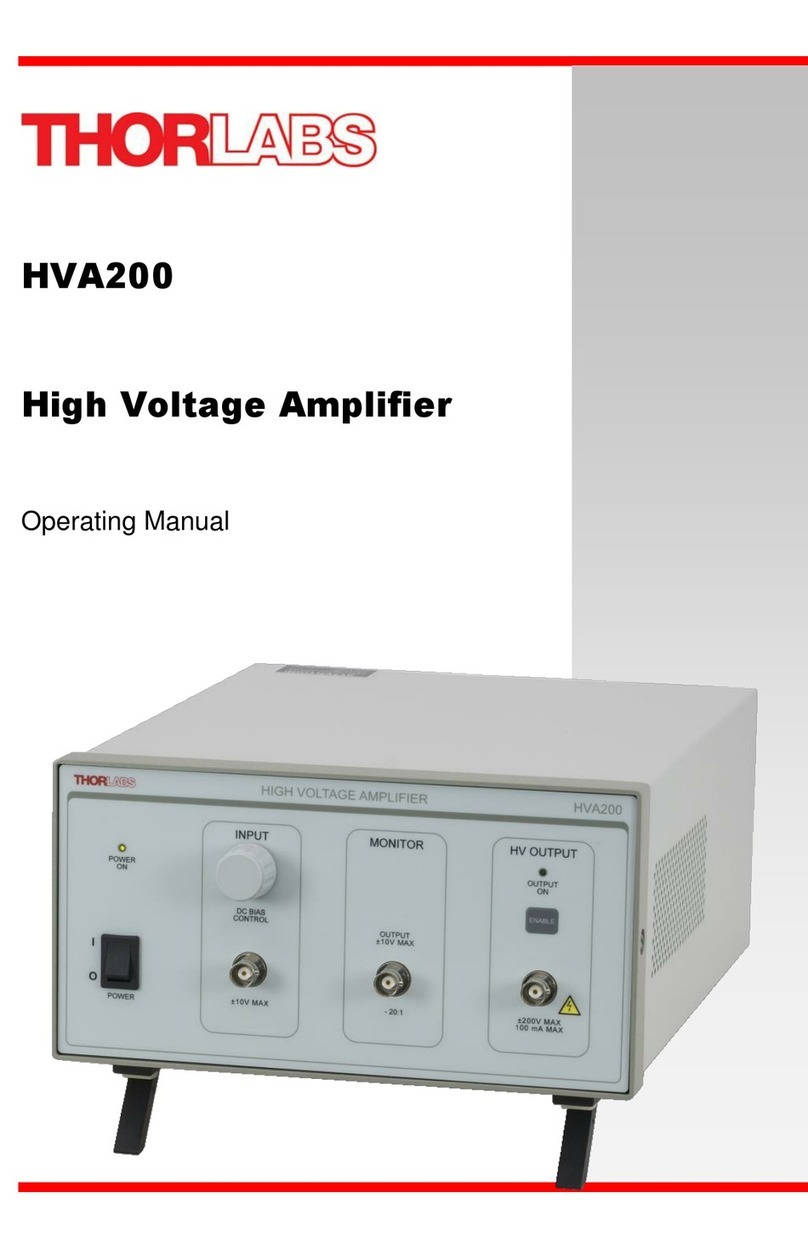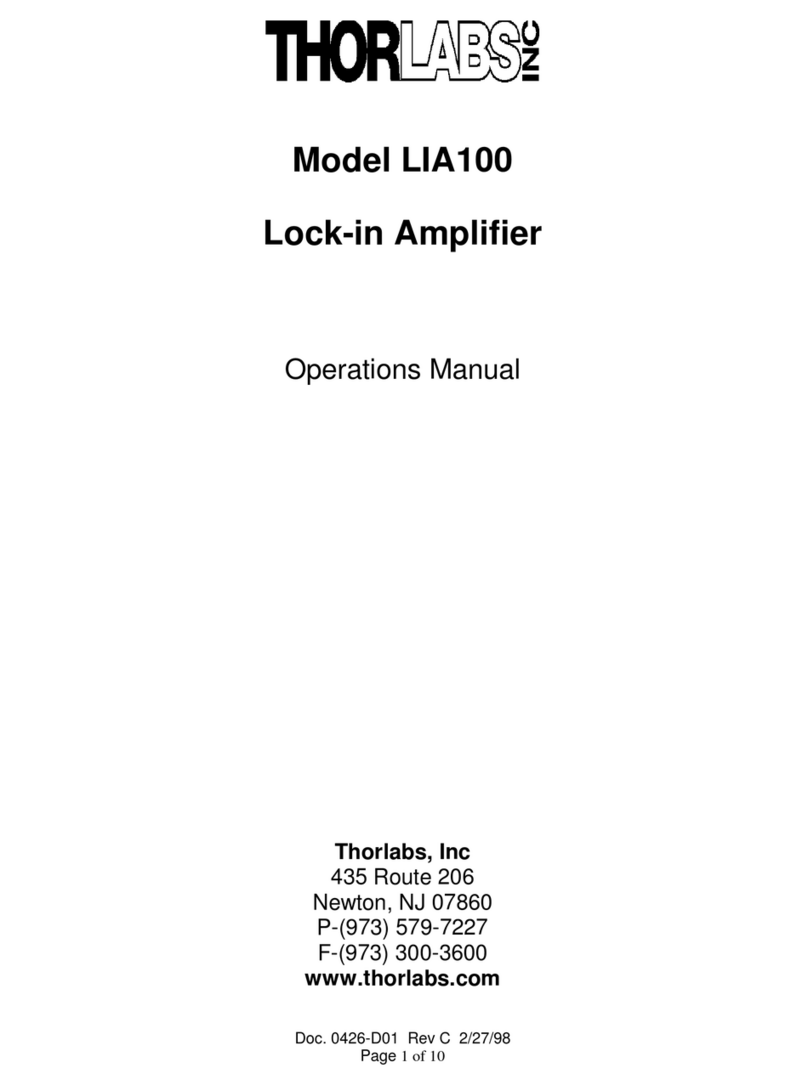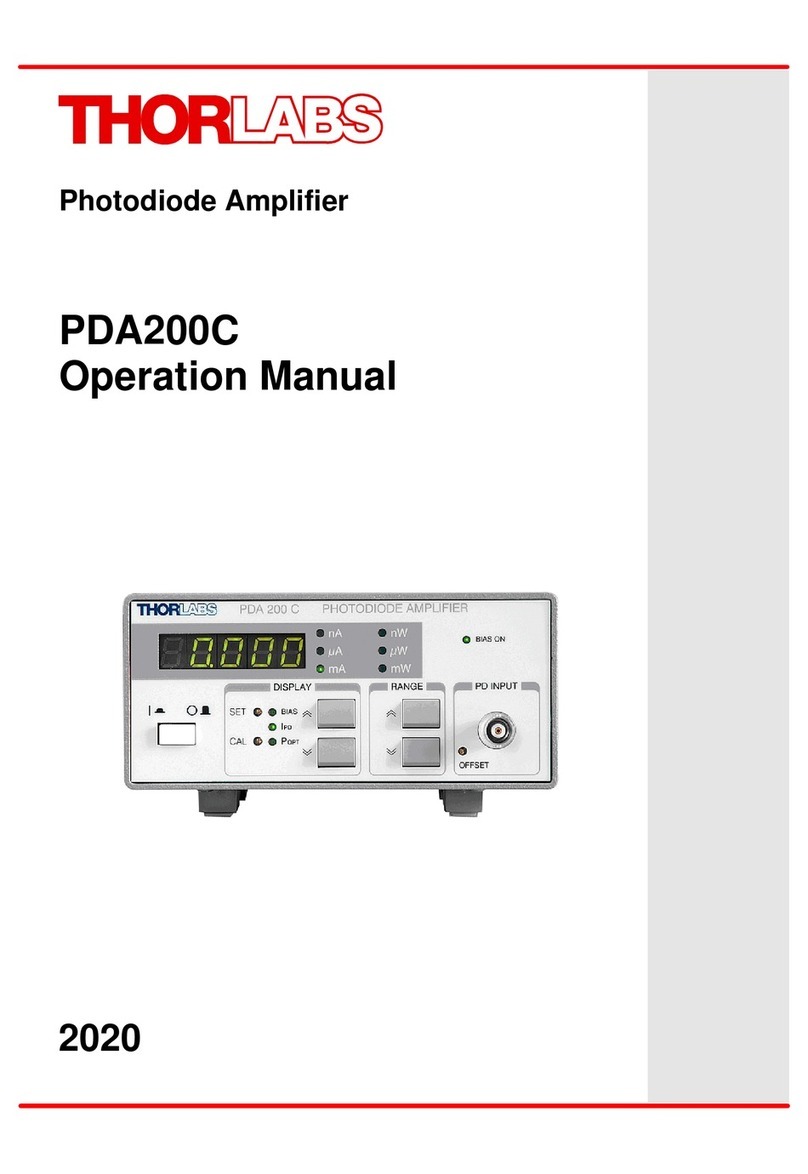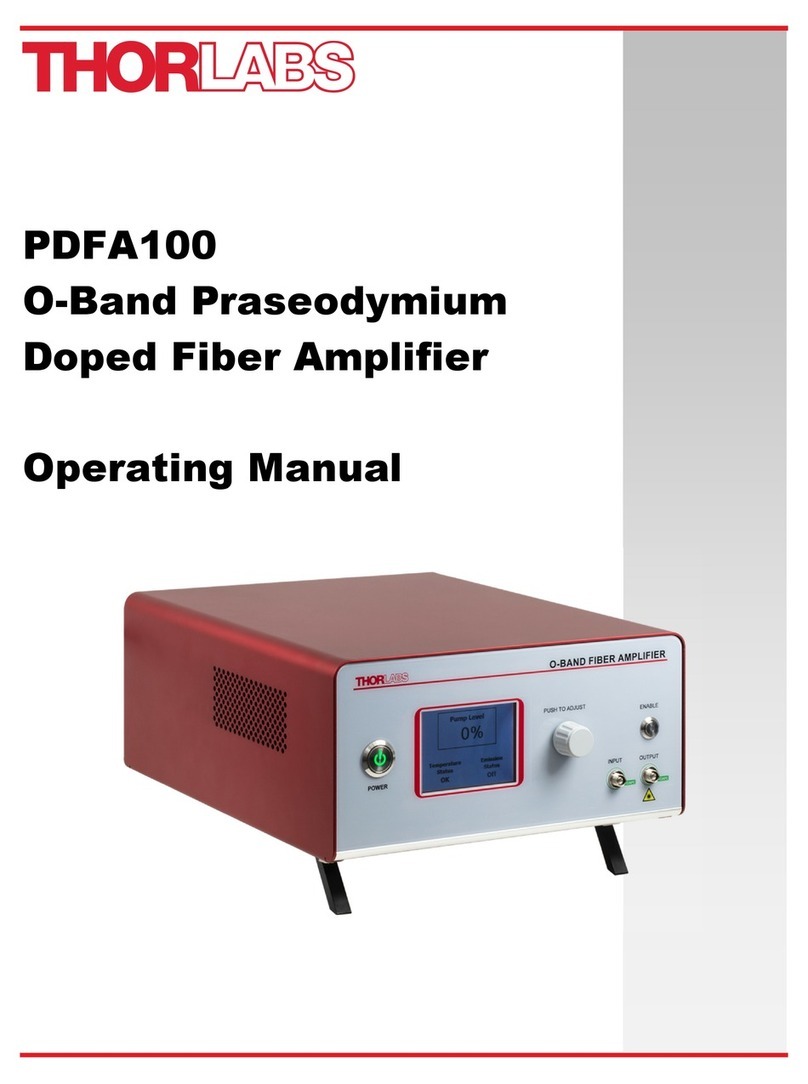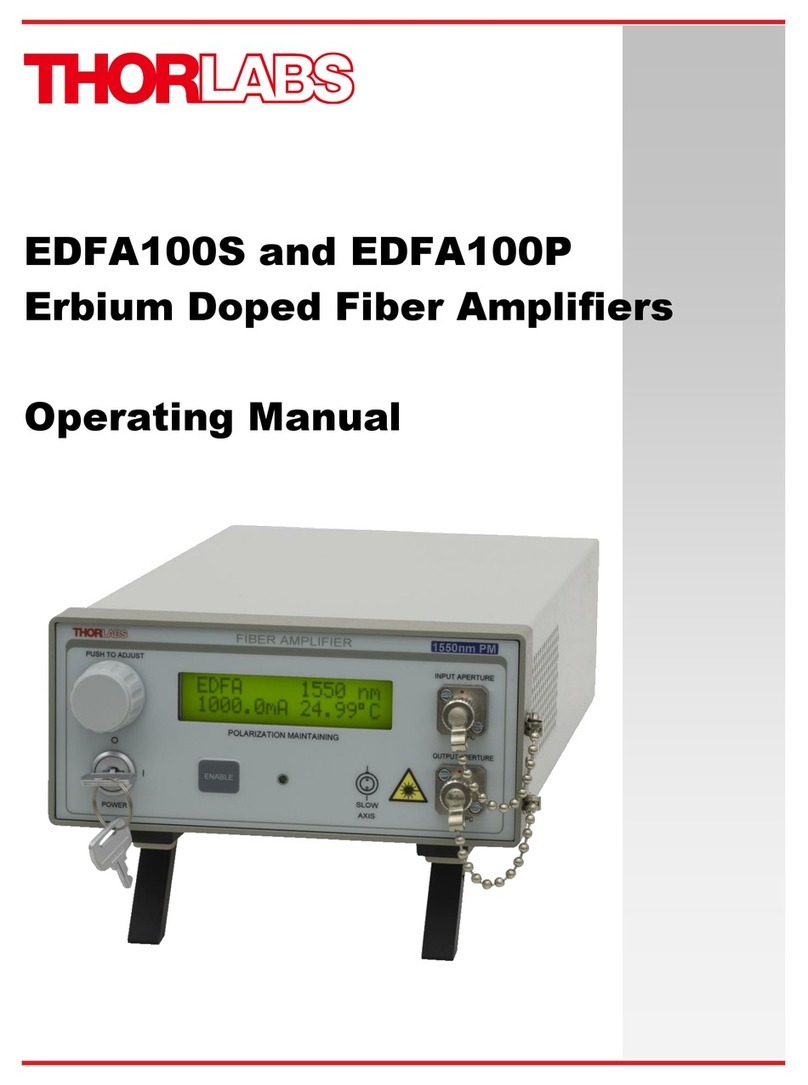
C-Band Fiber Amplifier Module Chapter 2: Description
Page 2 TTN322093-D02
Chapter 2 Description
Thorlabs' Erbium-Doped Fiber Amplifier (EDFA) offers high gain, high saturation power, and a low noise figure,
making it ideal for use within optical networks as either a booster amplifier or preamplifier. The fiber amplifier
technology offers an alternative to semiconductor amplifiers (SOAs) with improved optical performance by
eliminating the signal distortions typically associated with gain saturation in SOA devices. The C-band fiber
amplifier system is available in two power levels and two form-factors: the benchtop systems (Item # EDFA100S
with 20 dBm output power and EDFA300S with 24.5 dBm output power) and the plug-in PXIe cards (Item #
EDFA100SX with 20 dBm output power and EDFA300SX with 24.5 dBm output power). The benchtop amplifier is
built as a stand-alone system with built-in power supply and user interface, while the PXIe module is designed to
be operated inside a standard PXIe chassis (not sold by Thorlabs). The PXIe chassis provides power to the module
and the amplifier can be remotely controlled using a computer that is connected to the PXIe chassis. The
EDFA100SX and EDFA300SX modules provide the same optical performance as those of the EDFA100S and
EDFA300S benchtop amplifiers, while offering seamless integration into new or existing PXI test and measurement
setups, making it compatible with a broad range of existing electrical and optical plug-in modules. Additionally,
the small form-factor of the 2-slot PXI card saves space, power consumption, and cost especially when multiple
EDFA modules are required to operate in parallel. The module is ready to use when plugged into any PXIe chassis
(not sold by Thorlabs), for example National Instruments’ PXIe-1095. Up to 8 EDFA modules can be operated in
parallel using an 18-slot chassis such as the PXIe-1095.
Each amplifier module integrates pump lasers and precision current drivers to adjust the gain of the amplifier. The
input and output ports of the amplifier are FC/APC standard single-mode fibers, and the system includes input
and output isolators to protect the input laser source from any amplified spontaneous emission or back
reflections, as well as to prevent the pump light from exiting the amplifier. The modules are fully controlled
through the PXIe chassis using a PXI controller module. The device can be recognized as a serial port on a computer
allowing serial communications with the device. A list of control commands is available in Chapter 3 of this manual.
The amplifier module can be controlled in three different modes: automatic current control (ACC), automatic
power control (APC) and automatic gain control (AGC). In each mode, the controlled parameters (pump current,
output power, or gain) are actively controlled to stay at a constant target value.
For added safety, there is an interlock SMB connector located on the front panel that must be shorted in order
for the output to be enabled. This feature can be used to operate a remote interlock circuitry. An enable key-
switch (included) must be set to the “enable” position to activate the amplifier, and a green LED indicator displays
the emission status of the unit. There is a 3 second delay before the fiber amplifier turns on, and the user is warned
by the rapidly blinking LED.
